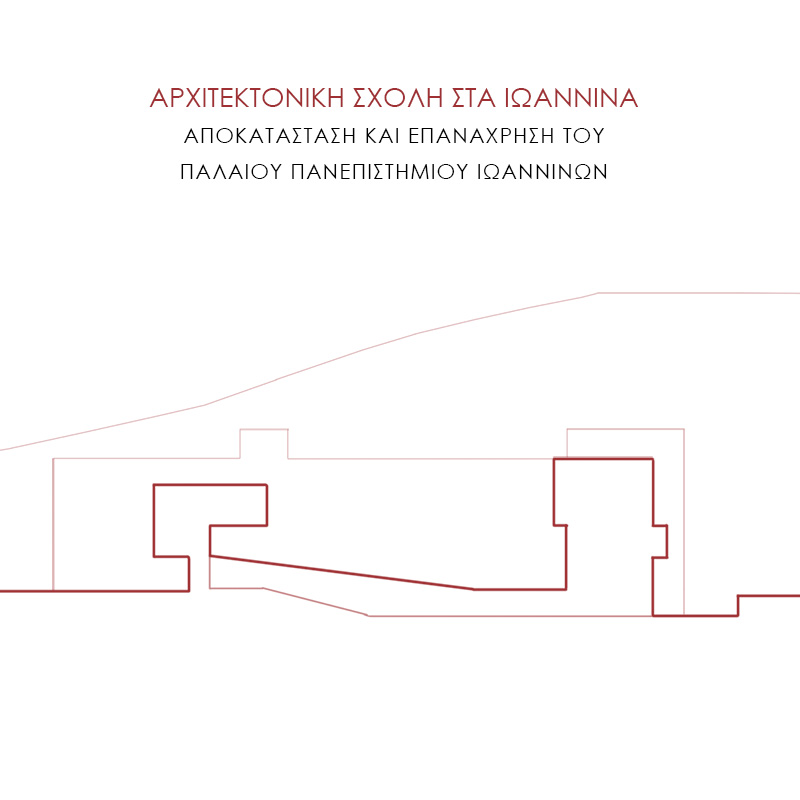



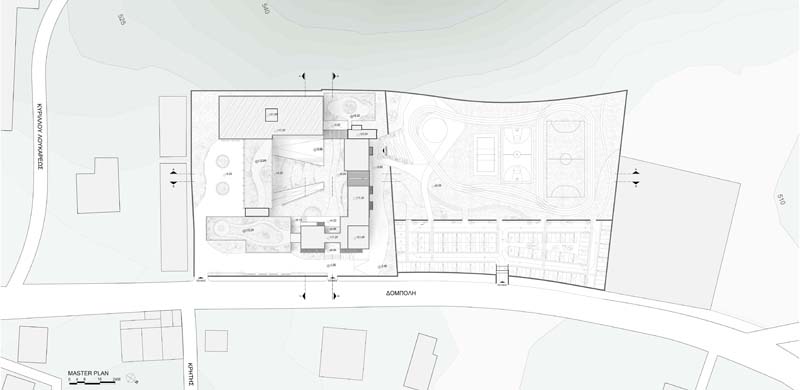

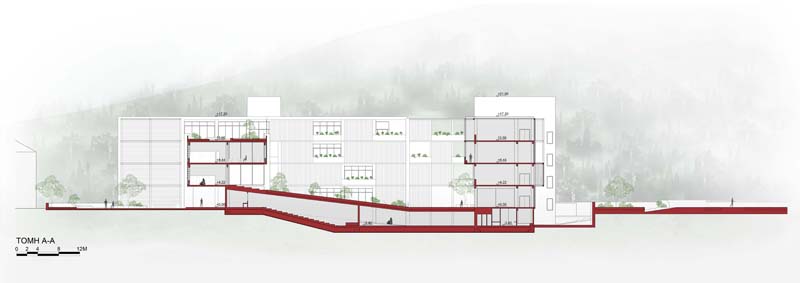

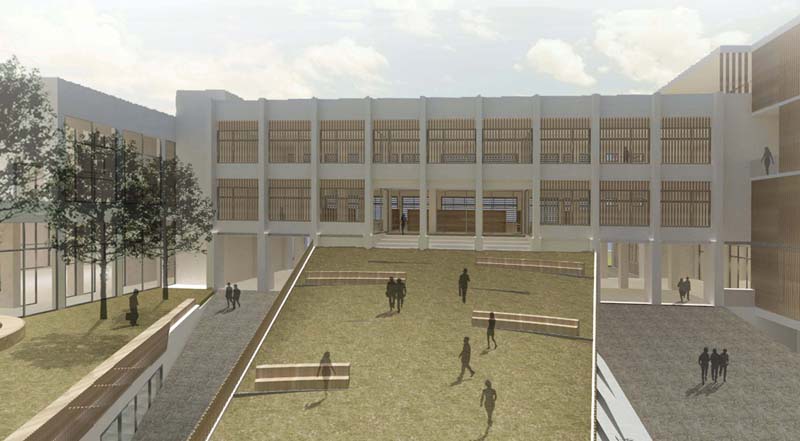

The subject of the thesis is the restoration and reuse of the old University of Ioannina on Ioannis Domboli Street. The building is referred to as a "symbol of spirituality that is identified with the modern history of the city of Ioannina" and its location creates an open front of communication and connection between the city and its inhabitants.
This building is the first University of Ioannina and today only a part of it has been utilized, which houses the offices of the tax office of Ioannina. The rest of the building, which can be seen from Domboli Street, is unexploited and not suitable for visiting or use. This image of the building has provoked many reactions in the local community and its restoration has been discussed enough. Present in this situation as a resident of Ioannina, I chose my thesis to deal with the study of the building due to its cultural and historical value and to house the School of Architecture of Ioannina.
The School of Architectural Engineering operated with its first students during the academic year 2015-2016. Its department was initially housed in the premises of the Science and Technology Park of Epirus, which is located near the campus of the University of Ioannina. This building did not meet the requirements of a school of architecture and from the beginning of 2014, the University of Ioannina expressed its interest to move the school in its own building, so that it has the space to promote and cultivate the science of Architecture Engineer.
An important role in the proposal of the thesis, was played the fact that the building of the old University of Ioannina is designed to accommodate University premises. With its reuse, the old University of Ioannina as a building, will continue to have an educational character and will give an essential and symbolic significance of the presence of the Department of Architecture in the city of Ioannina.
Supervisors: Adamakis Kostas, Tsangrassoulis Aris
Reference Number: 837


The topic explored / designed / presented in this thesis has as its initial thought the way in which library buildings could exist today combined with the role that a botanical garden would have in the center of a city, with the peculiarity of placementof them under the ground. Libraries are first mentioned as the architectural realization of the shelter of knowledge and then their evolution is studied until today, where in theory they seem to be useless for the time due to the digitization of the cognitive material. Going back to the definition of botanical gardens, which makes them research and study centers, we are led to the idea that today the library can have the character of a Learning Center.The design takes place in Katerini, Pieria, a city made up of refugees and shows elements of diversity in its culture like no other provincial city in Greece. The plot of the following plot is simple and includes the perimeter layout of the building around the botanical garden, at an altitude of 7.20 meters below the ground, while scattered patios appear which will offer adequate contact of the building with the external environment.Finally, from the citation of the design proposal and operation, as well as the arguments in favor of the creation of the Apprenticeship Center, it appears that it will support and highlight the element of the city related to socializing and tolerance in the different.
Supervisor: Stylidis Iordanis
Reference Number: 806


The block located near Klafthmonos square is presented as a closed fenced structure that prevents the access and crossing of the public in their everyday movements. The solid corner fronts formed by the main roadways in the center of the city of Athens come to an immense contrast with the angular and more wide-open end of the block in the opposite corner, which marks an indirect entrance to the interior areas of the block. The buildings that are part of it are characterized by intense cultural significance and consist a landmark of the historical, classical architecture of Athens, while at the same time they symbolize the decline of Greek culture that prevents to this day their rehabilitation.
The examination on this block focuses on the changes and configurations that a building can undergo in a vast period of time, both from natural causes and from human interventions. There interventions, alter the original character and purpose of the building, resulting in the tendency of extinction of its heritage and history.
The purpose of this diploma is the reintegration of the building block in the urban network, but in the same time without restoring the exact uses of the abandoned buildings. The utilization of empty spaces and the creation of openings as public passages contribute to the tour and recognition of a part of the cultural heritage that is now missing. All these, while preserving the existing cultural functions and highlighting them in combination with the inanimate remains of a once secular Athens, a prominent narrative path is created that aims to communicate their history, both semantically and architecturally.
Supervisor: Mitroulias Giorgos
Reference Number: 833
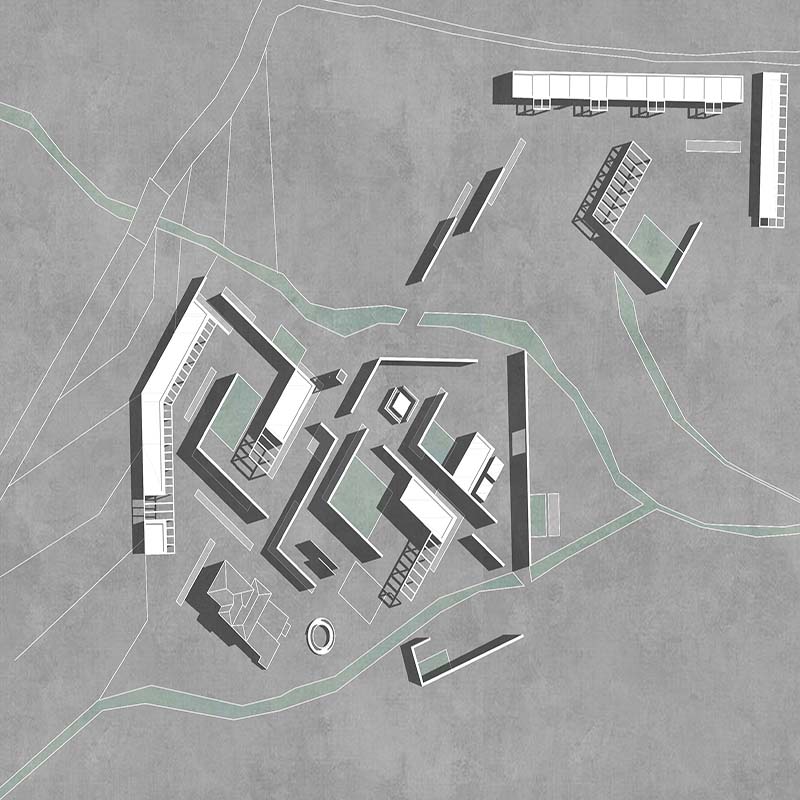



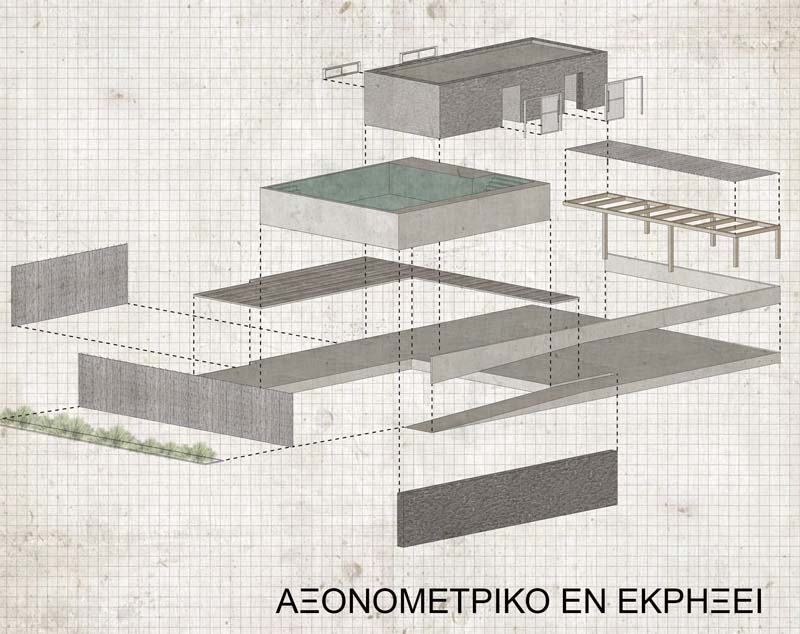

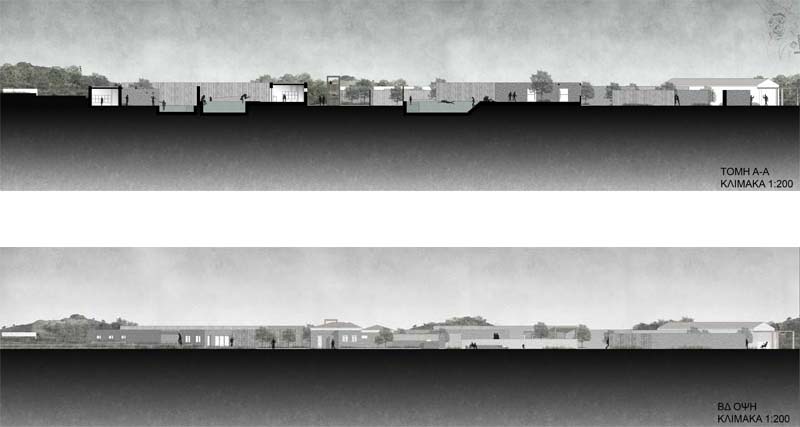



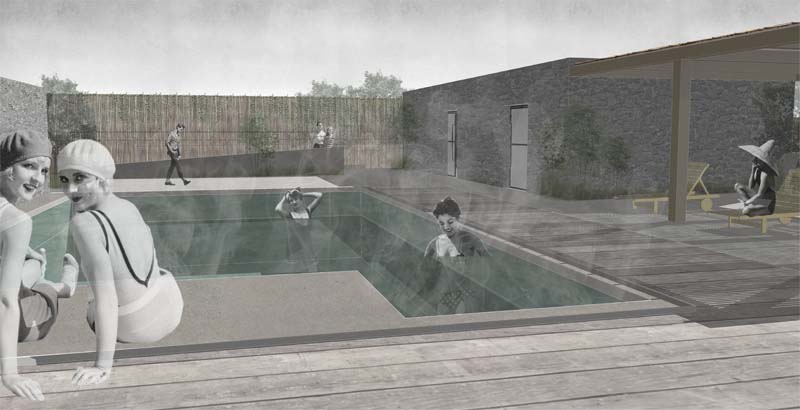

The hot springs are places where man seeks to find elements that will lead him to the revelation of new realities, different from the everyday life he experiences. The architecture of the places of well-being is of a minimal kind. What matters most is the experience of the bather in the actual place. The elements that specify the hot springs create an atmosphere which activates the bathers’ senses and create shared or personal experiences.
The history of the use of the hot springs from the ancient times until today has passed through various stages. However, it is certain that these places have always been something more than simple cleansing places. The baths are places where the prerequisite is the satisfaction of the bather’s senses so as to be in a state of tranquility and physical and spiritual well being. The baths were meeting places and places where one could associate with other people, places of freedom and pleasure. Furthermore, water - the element that is characteristic of the baths – helps the bather to feel purified and physically and spiritually clean. That’s why the hot springs became places for rituals, necessary for many religions and civilizations.
Modern man is in need of more places with bathing facilities easily accessible that will offer the peace and tranquility he seeks. Unfortunately, more and more baths are closing in our country, as it seems that the state hasn’t realized the value and wealth the hot springs offer to our country. The same goes for Lesvos island and its hot springs. During the centuries, geological changes have endowed Lesvos island with many hot springs which influenced the life on the island. However, most of them are closed and some are neglected by the municipal authorities.
The specific assignment focuses on the study of the bathing facilities of the hot springs situated in Polychnitos, a village of Lesvos island. To enable the visitor to have the ultimate bathing experience, the creation of a labyrinth is proposed. A complex of passages which aims at the visitor’s wandering in the place will finally lead him to a physical and spiritual purification. Going through the passages not only will the people be able to choose a variety of facilities to use ( cisterns of hot or cold water, vapour baths, sauna, mud baths ) but also to enjoy the natural landscape and the imposing presence of the stream that is a natural boundary of the place. Moreover, after wandering in the natural landscape and their physical cleansing, it is possible for the visitors to stay in the rooms of the guest houses if they wish to continue their bathing therapy for some time. The interventions aim to stress the beauty of the landscape as well as the importance of the hot springs which nowadays have been neglected.
Supervisor: Mitroulias Giorgos
Reference Number: 836
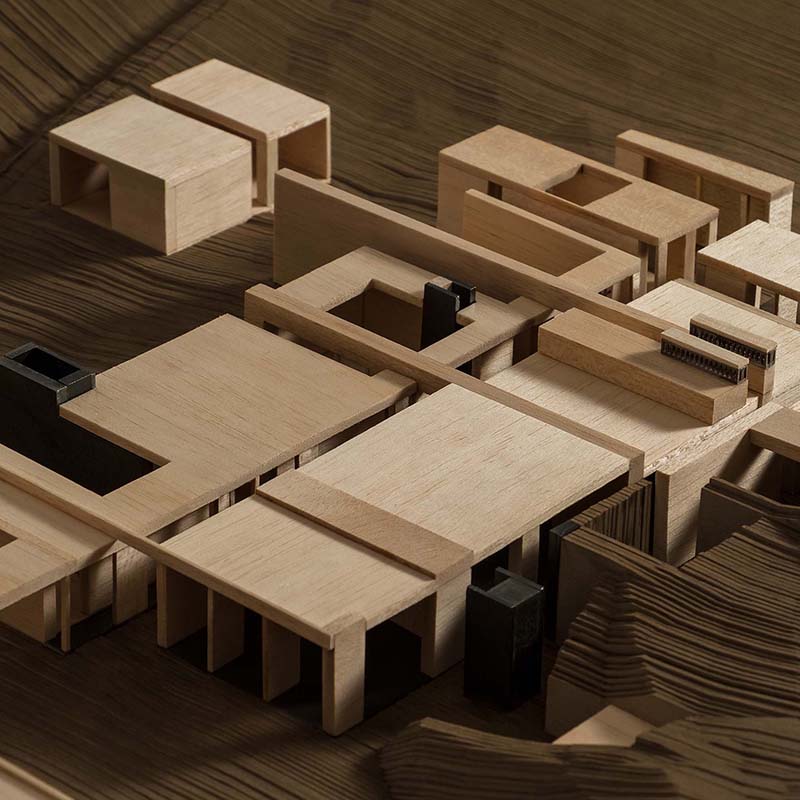

Olive growing is the cultivation symbol of Skiathos island. In the post-war years, there were twenty oil mills, several of which were located in the center of island. The 20th century is a turning point for the architectural physiognomy of the islands of the North Aegean, with the typical case of Skiathos.
In Skiathos, which was completely transformed into an island only for tourism, during the 1970s and 2000s, types of buildings began to "disappear", which in the past were widespread, such as olive mills, due to the great interest of residents in tourism and facilities. The result of this development is the absence of an olive mill from the island. For the past five years, the last olive grove on the island has been closed, and residents have been forced to transport tons of olive fruit to Glossa, a settlement in Skopelos, to produce olive oil. Thus, taking into account the lack of an olive mill from the island, we are organizing the issue of our thesis, in order to provide a solution through our proposal for the creation of an oil mill with olive tourism facilities in Skiathos.
The synthesis of the olive mill is organized in three thematic zones: the storage and auxiliary spaces, the production of olive oil and the visitors. The basic design principle is the porosity of the volume, which will ensure a constant contact and interaction of the zones. The aim is to connect the visitor with the olive grower, making the oiling process more understandable and experiential for the visitor. Although the connection between visitors and olive growers is the main concern of our composition, the production process and the movement of visitors are controlled, through oursynthesis, to ensure safety and functionality.
The visitor is not limited to a tour of the olive mill. He learns the whole environment of the olive tree. Olive tourism is the "aesthetics" of centuries-old olive trees, the beauty that olive groves give to the landscape. It is the Greek cuisine itself, inextricably linked with their fruits. It is also every organized action in the village or in the city, which conveys to the visitor the knowledge, the experience, but also the image of Greece all over the world, through the culture of olive oil.
Supervisor: Mitroulias Giorgos
Reference Number: 805
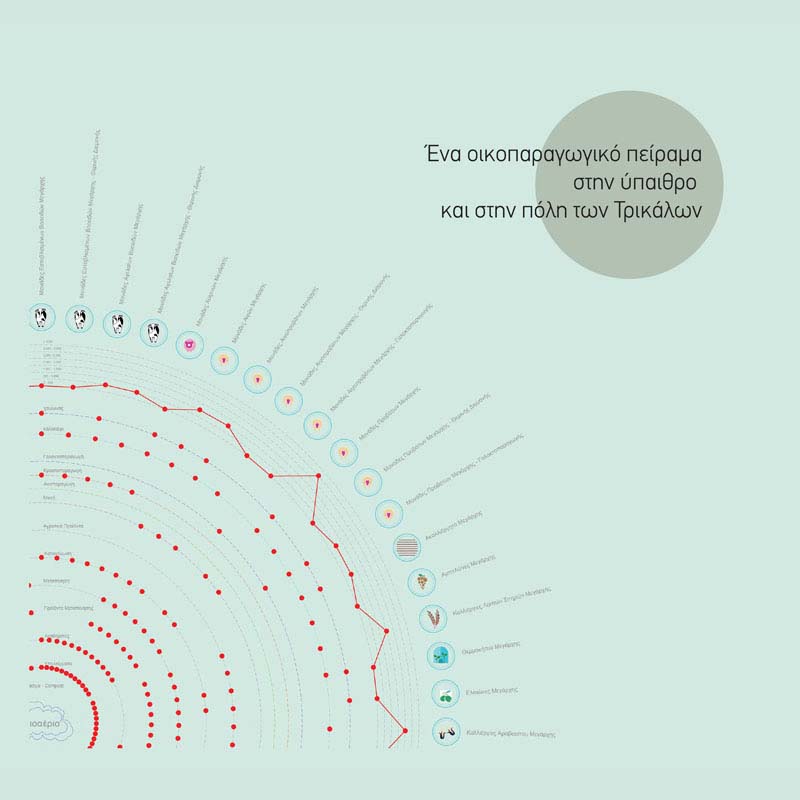

The city and the countryside are places of vital importance of the Greek reality. Although the city succeeded over the countryside along centuries, it hasn’t been detached from it. The earth, apart from man, gave birth to all the necessary means in order for him to be able to survive and evolve. The public markets, that even today retain the glamor of previous years, are the places of connection of this apparent gap between the countryside and the city. Meeting places, public places where every citizen can be willingly active. They are part of the Greek life and tradition. That's why they remain so important. But what is of great interest in them, is that one can find in them the place of origin of the products, the journey of production, the land, the people.
Therefore, as far as the popular market of Trikala is concerned, we mentally travelled through time. We followed Fernand Braudel’s paths in the Mediterranean. We observed Gramsci's theories and Hatzimichalis' record of modern Europe and its people. The uneven geographical development that reached the peoples of Southern Europe in poverty while those of the North in the accumulation of wealth. André Gorz’s redevelopment among other theorists, helped us see the popular market from different perspectives. To find opportunities and to use the Greek land. And finally, we returned to Trikala; but this time with a broader look at the place, the people, the products. The present study aims to examine the potential for self-sufficiency and the revitalization of the city through sustainable development, is the production of biogas from Anaerobic Digestion of waste and residues produced by local crops, the local animal stock and their treatment and its application in settlements.
Supervisor: Lykourioti Iris
Reference Number: 834


In recent years, there are more and more opportunities for the active participation of users in design. In the dissertation, we study how an alternating construction system can meet the basic daily needs of a user, involving him in the process of designing his space. We observed daily human actions together with the objects they use, both in private and public environments. We analyzed the physical heights at which these actions happen and developed a construction on a 1:1 scale, which after being multiplied by specific constants, results in 3 basic levels of actions. Those levels are split into those of the seat, the desk, and the eye. The basic structure of the system is based on a single neutral unit. Our goal was to build a set of rules which, when used together, can bring value to the user by defining the space around him. We arrived at the design of a single system that lets users create and edit complex structures with ease. This system “grows” and evolves together with the person, whose experiences and habits have a direct connection to the layout and functions of resulting structures. Acting as potential users, while using the toolbox, we created examples of such structures and gave them various functions.
Supervisor: Kotionis Zissis
Reference Number: 831
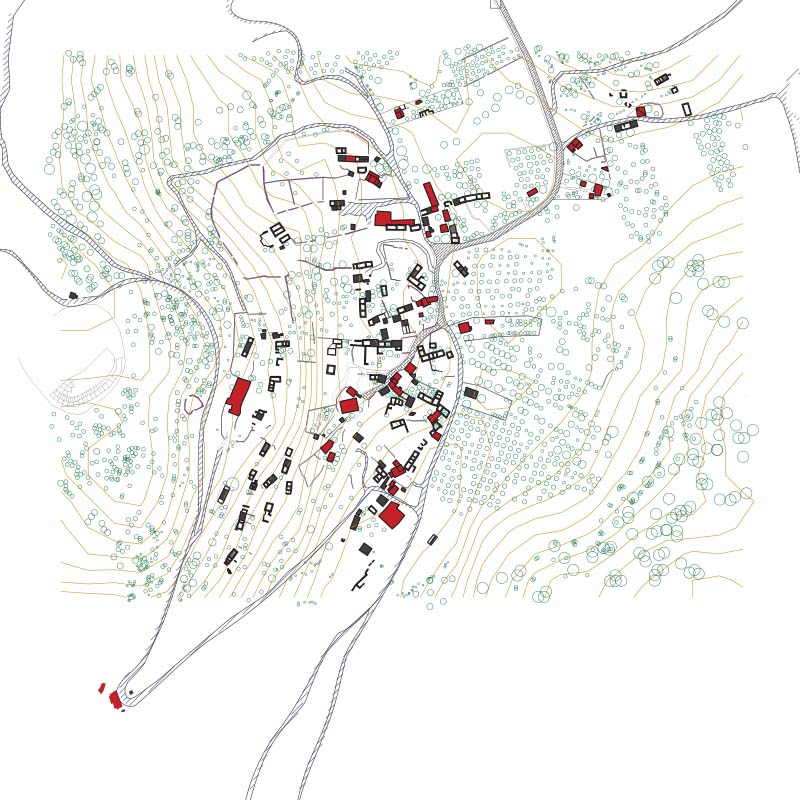

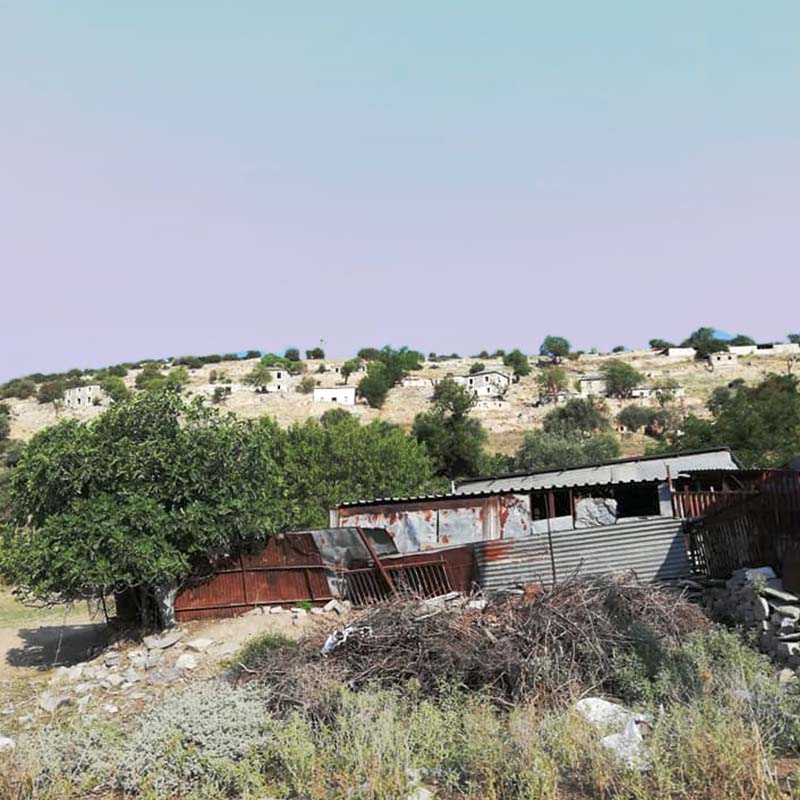

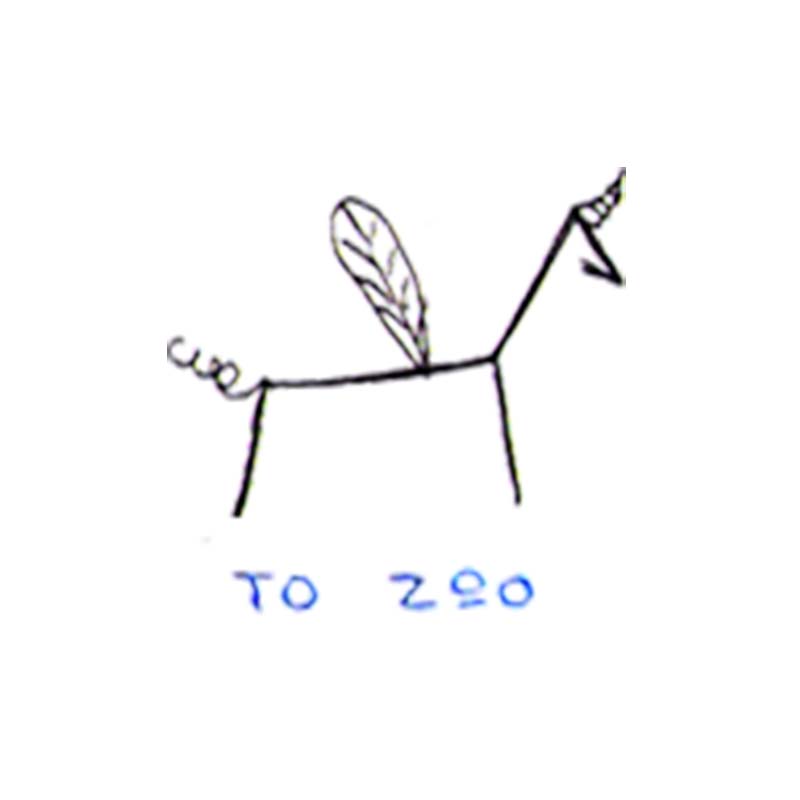

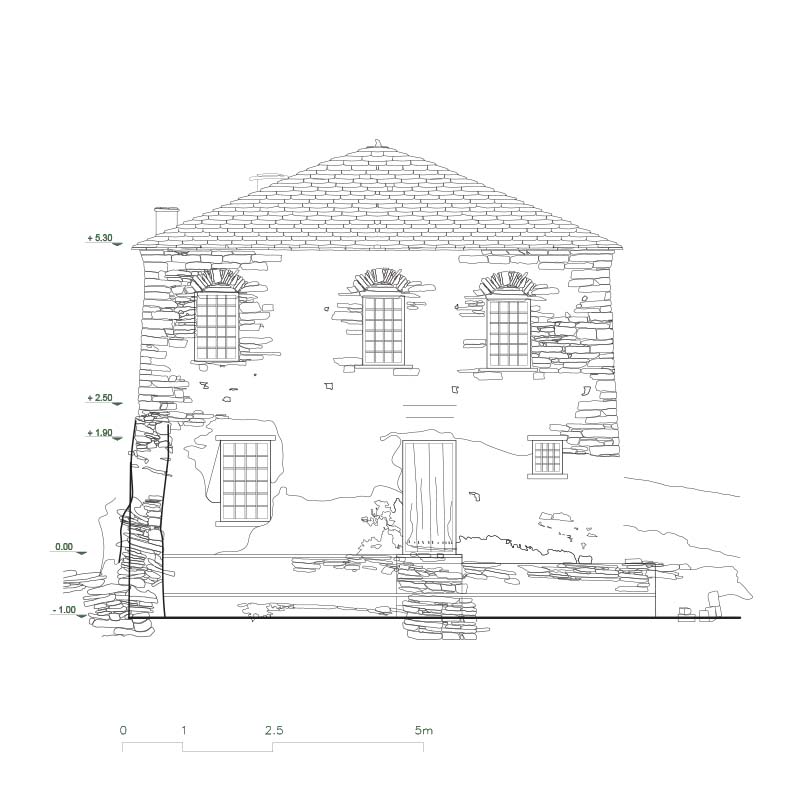

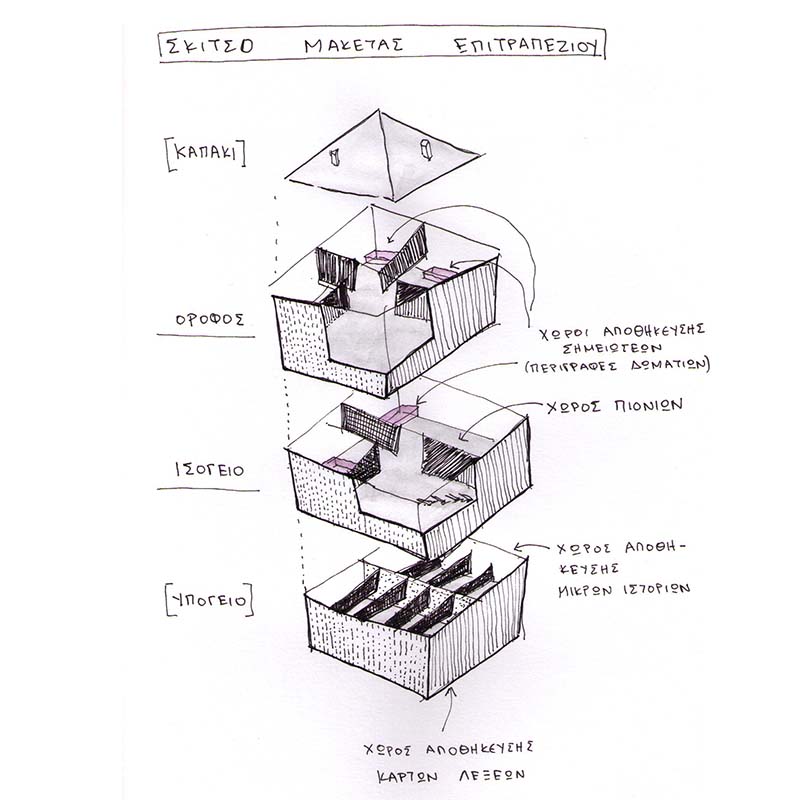

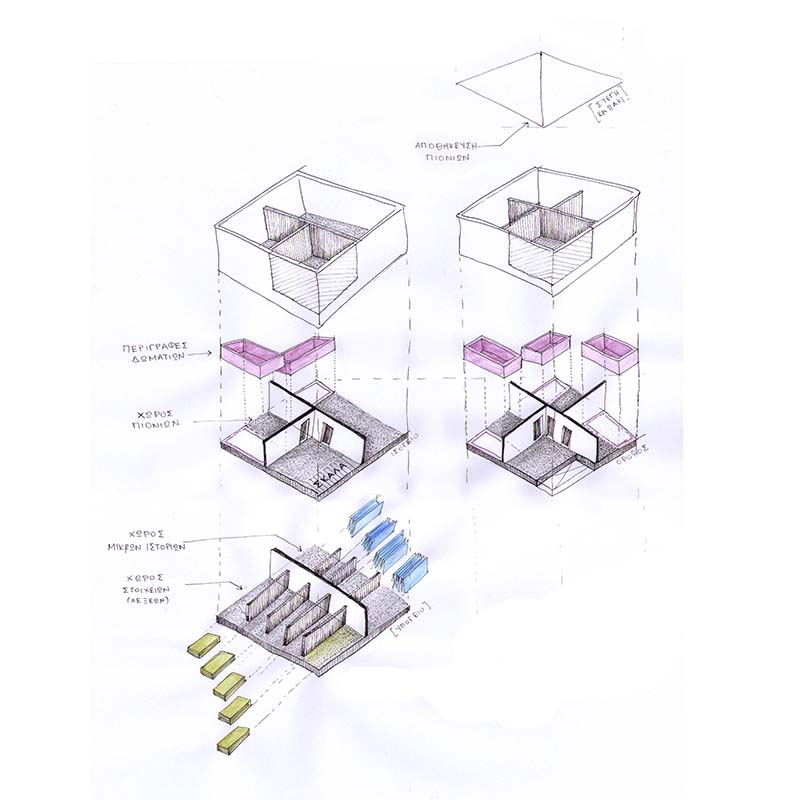

“Imagine that you’re invited in a place, somewhere. You are standing in front ofthe gate of a very abstract space, in a very abstract environment. You are probablythinking: “Things get clearer when you watch from the inside.” The door behind youcloses. You ‘re standing in the hall, but it’s dark in there. You’re searching in the blindfor something like a weapon or food. You open doors. There are spots in the rooms witha bit of light, you barely see something. Sometimes speeches of people can be heardthat come from the outside. You can’t really figure out what they ‘re saying. You don’tknow who they are but some of the things you descry seem familiar to you. You musthave seen them or heard them somewhere before. Suddenly, feelings and promotionsarise in you. Stories, images, smells and sounds mix with impulses while trying toshape the universe you’re in.”
The Creative Sew-riting Game is a place made up by composing fragments fromthe experience of exploring the dorp of Paliouri, in Magnesia, GR.
Supervisors: Giannisi Phoebe, Kotionis Zissis
Reference Number: 829

